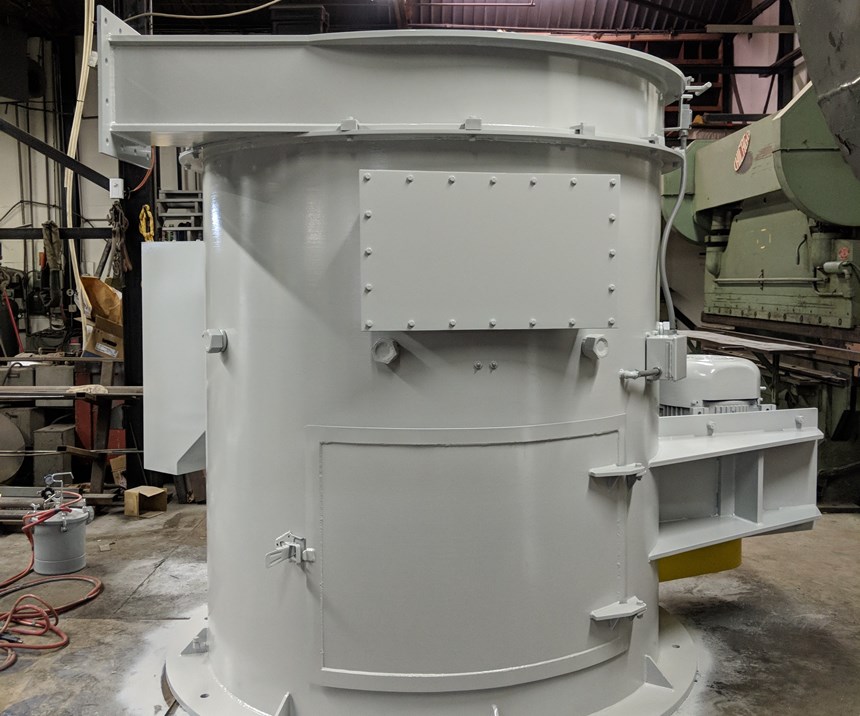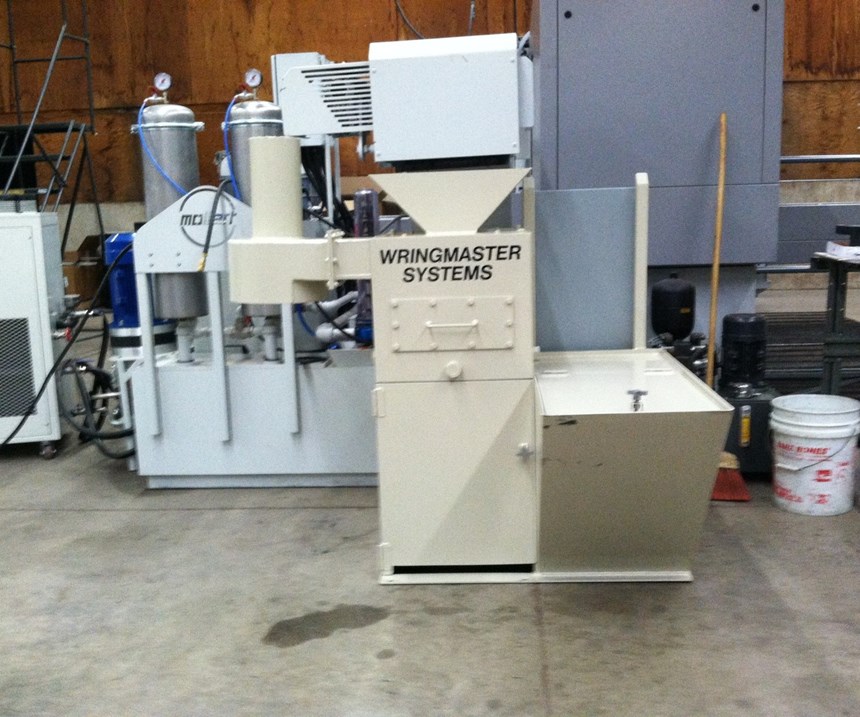Dryness is the Name of the Game When Wringing Chips
Wringmaster Systems has combined a live bottom unit and a chip blower, reducing chip contact with expensive components while increasing dryness and recovering even more cutting fluid.
Continuous chip wringers, to remove coolant from metal chips produced in machining processes, were developed in the early 1960s. They employed a spinning bowl shape that moved chips across a perforated surface through which the liquid was ejected. After drying, the chips were forced out of bowl into a container or conveyor. Through time, other designs evolved, some using a vertical bowl and others with horizontal or diagonal bowls. Today, most use a vertical arrangement, which uses centripetal force—much like a toy spinning top—to drastically reduce loads on bearings.
Wringer designs remained basically the same for decades until the late 1980s when Reclamet, then a startup company, came out with a new concept: Instead of allowing chips to fall by gravity out of a wringer, this design used a blower-shaped housing around the bowl discharge area. The result was a combination wringer/blower, eliminating the need for a discharge conveyor. The airflow caused by the blower effect was later used to separate chips from solids at the wringer inlet. This allowed the recovery of valuable workpieces and also kept potentially damaging solids from entering the wringer. Today, this chip wringer design is the most commonly employed.
Concurrently, in Europe another design called the live bottom wringer evolved that used a cylindrical bowl with a bottom that moved up and down to push chips across the screen. This design offered several advantages. It did not need internal blades, so the chip distribution on the screen remained totally uniform. The live bottom also allowed very fine material, such as grinding sludge, to be dried. However, a downside of this design is that it requires a discharge conveyor.
Since that initial redesign, Reclamet has become Wringmaster Systems and has combined the two technologies, creating a live bottom unit that is also a chip blower. In previous continuous chip wringer designs, chips move in contact with the bowl surface, consequently wearing and eroding expensive components. But with this new machine, all components in contact with chips are inexpensive and easily replaced repair parts. Also, the length and speed of the lift cycle are adjustable so a unit can be fine tuned to each application.
Dryness still remains the name of the game in wringing chips. Companies want to recover every last drop of cutting oil or remove any trace of polluting water-based coolants. The Wringmaster wringer has twice the screening area of any units now on the market. Couple this large screen with 100-percent screen utilization and the results are levels of dryness that, according to the company, were previously unattainable.
For more information, contact Wringmaster at 269-329-6100 or visit wringmaster.com.
Related Content
-
FluidLynx Offers Intelligent Cooling Lubricant Automation
PMTS 2023: Motorex’s FluidLynx automated fluid management system offers controllable and traceable process reliability, while better protecting workpieces and machines, and optimizing tool life.
-
Custom Formulations for Proper Equipment Lubrication
PMTS 2023: Engineered Lubricants manufactures custom formulations of lubricants, metalworking fluids, rust preventives and cleaners to fit customers’ specific production requirements.
-
Master Fluid Solutions Semisynthetic Coolant Improves Sump Life
Trim MicroSol 685XT is designed to provide enhanced corrosion inhibition on all ferrous and nonferrous metals.


















